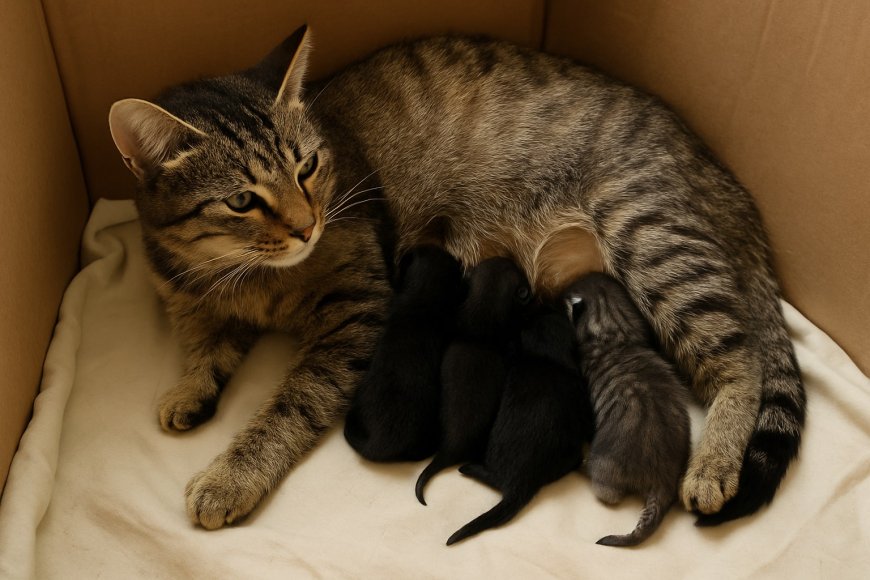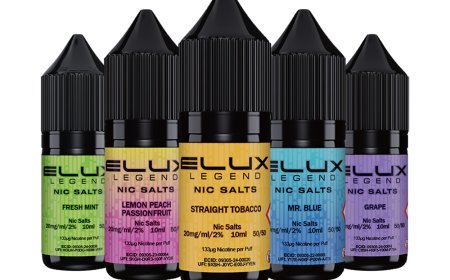Feline Fertility Facts: How Many Litters Can a Cat Have in a Lifetime?
Discover how many litters a cat can have, the risks of overbreeding, and tips for care using the best cat litters like Kwik Pets for a healthier feline life.

Cats are famously prolific breeders. From a single litter to multiple ones annually, a female cats reproductive cycle is remarkably efficient and frequent. Understanding justhow many litters a cat can have helps pet owners make responsible decisions about spaying, neutering, and caring for their furry companions. In this blog, well explore a cats reproductive capabilities, the implications of frequent breeding, and the importance of choosing the best cat litters for a comfortable environment. Whether youre a breeder, a rescuer, or just a curious pet parent, this guide breaks down the numbers, the biology, and the real-life considerations of feline reproduction.
Understanding Feline Reproduction
Before we dive into the numbers, it's essential to grasp the basics of a cat's reproductive cycle. Female cats, known as queens, typically reach sexual maturity between 4 to 6 months of age. Once mature, they can go into heat (estrus) every 23 weeks during the breeding season, which often runs from early spring through late fall. Some indoor cats may even cycle year-round due to exposure to artificial lighting and warmer indoor climates.
How Often Can a Cat Have Litters?
A cat's pregnancyalso known as the gestation periodlasts approximately 63 to 65 days (about 9 weeks). This means that, theoretically, a female cat can have up to 3 to 5 litters per year, depending on how quickly she mates again after giving birth. Some cats may even go into heat while still nursing their kittens.
But how many litters a cat can have doesnt necessarily mean how many they should. Its vital to consider the health, age, and living conditions of the cat when discussing repeated pregnancies.
How Many Kittens Per Litter?
Each litter typically contains 3 to 6 kittens, although this number can vary widely. Some first-time mothers may have just 1 or 2, while experienced queens might produce as many as 8 or more. Over her lifetime, depending on how often she gives birth and how long she remains fertile, a single cat can give birth to over 100 kittens!
Example:
-
4 litters per year 5 kittens per litter = 20 kittens/year
-
If a cat reproduces for 6 years: 20 6 = 120 kittens in her lifetime
This staggering number illustrates the importance of spaying and neutering as a method to control the cat population and prevent unwanted litters.
What Is the Healthy Limit for Cat Litters?
While the reproductive system of a cat allows multiple litters annually, repeated breeding without sufficient recovery can lead to numerous health issues, including:
-
Uterine infections (pyometra)
-
Nutrient depletion
-
Stress and behavioral problems
-
Weakened immune system
-
Decreased lifespan
Ethical breeders and responsible pet owners often recommend no more than 1 to 2 litters per year with ample rest periods in between. Additionally, many choose to retire their breeding queens around 5 to 6 years of age, allowing them to live comfortably as household pets.
When Should You Spay Your Cat?
Veterinarians often advise spaying a cat before her first heat cycle, usually around 5 to 6 months old. Early spaying helps prevent:
-
Unwanted pregnancies
-
Mammary gland tumors
-
Uterine infections
-
Roaming and aggressive behaviors during heat
Moreover, early spaying plays a significant role in pet population controla concern for both individual homes and animal welfare organizations across the USA.
Managing Cat Litter for New Mothers
When a cat is pregnant or nursing kittens, comfort and cleanliness are critical. Choosing the right litter not only helps with odor control but also ensures a hygienic environment for both the mother and her newborns. Soft, dust-free, and unscented options are often preferred.
Many pet owners trust Kwik Pets cat litters for their balance of absorption and gentleness, especially during sensitive periods like post-birth care. The right litter keeps the nesting area clean, reduces respiratory irritation, and makes litter training easier for the growing kittens.
Health Risks of Overbreeding in Cats
Letting a cat have too many litters, especially in a short timeframe, can lead to long-term health problems such as:
-
Uterine rupture
-
Calcium deficiency (leading to eclampsia)
-
Increased risk of complications during delivery
-
Lower quality of life
Its not just the physical health that suffersmental health and emotional well-being are at stake too. Overbred cats may become withdrawn, aggressive, or exhibit signs of stress.
What to Expect Post-Birth: Recovery and Reproduction
After giving birth, a cat will typically go back into heat within 46 weeks. However, if the kittens are removed or weaned early, this can accelerate the timeline. Many experts recommend keeping the mother cat and kittens together for at least 810 weeks, not only for health benefits but also to prevent early stress-induced heat cycles.
During this time, maintaining a clean litter box is essential. Invest in the best cat litters that clump easily and absorb moisture well to make cleanup manageable for both you and your nursing feline.
Controlling the Cat Population: Why It Matters
Every year, millions of unwanted cats and kittens are surrendered to shelters or live on the streets. Uncontrolled breeding plays a significant role in this. While kittens are undeniably adorable, it's important to be a responsible pet owner and limit breeding to prevent overpopulation and suffering.
By spaying and neutering, we reduce the burden on shelters and give more animals a chance to find loving homes.
Conclusion: How Many Litters Should a Cat Have?
In summary, while a cat can biologically have 3 to 5 litters per year and potentially over 100 kittens in her lifetime, its not advisable. Ethical breeding, proper care, and timely spaying can ensure your feline friend stays healthy and happy throughout her life. If you're caring for a cat whos pregnant or nursing, be sure to create a clean, calm space with reliable litter products like Kwik Pets cat litters to make the journey smoother for both mom and kittens.
Recent USA Pet News Reference
According to a recent report by the American Pet Products Association (APPA), over 45 million households own cats in the United States, with increasing interest in sustainable litter solutions and early spay/neuter initiatives to reduce stray populations. This underscores the importance of choosing environmentally friendly litter products and being proactive in managing feline reproduction.
FAQs About Cat Litters and Reproduction
Q1: How many litters can a cat safely have in one year?
A healthy cat may have up to 3 to 4 litters per year, but its safest to limit breeding to 1 or 2 litters annually to avoid health risks.
Q2: What is the average number of kittens per litter?
Most cats give birth to 3 to 6 kittens per litter, though some may have more or fewer depending on age, health, and breed.
Q3: When should I spay my female cat to prevent litters?
Its best to spay your cat before her first heat cycletypically between 5 and 6 months of ageto prevent accidental pregnancies and health issues.
Q4: Which cat litter should I use for a mother cat and kittens?
Choose a soft, unscented, and dust-free option like Kwik Pets cat litters, which provide a comfortable and safe environment during postnatal care.
Q5: Whats considered one of the best cat litters for odor control and clumping?
Many pet owners prefer clumping clay or natural litters that offer strong odor control. The best cat litters are also easy to scoop and gentle on sensitive paws.























